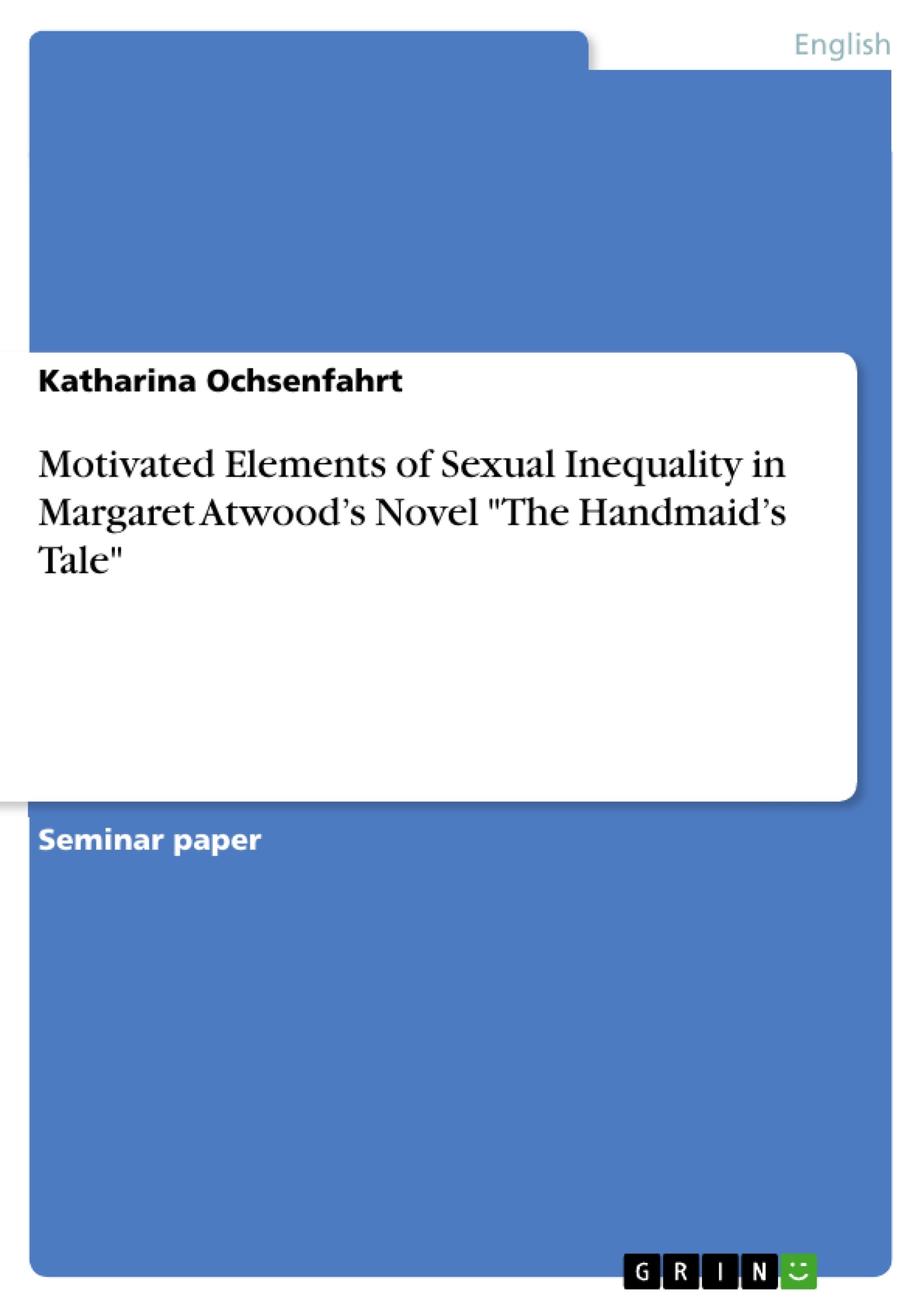"…women represent fifty percent of the adult world population, one third of the official labour force, perform nearly two-thirds of all working hours, receive only one-tenth of world income and own less than one percent of world property."
This quotation from an United Nations report has been in the manuscript of The Handmaid’s Tale as possible epigraph, before Margaret Atwood decided to discard it. But nevertheless it shows very distincly that sexual unequality is still an important subject for discussion and literary works. In particular Margaret Atwood, who is also active in Amnesty International , paints a horrible, brutal and extremistic world in her dystopian novel The Handmaid’s Tale. In her essay “Writing Utopia” Margaret Atwood emphasizes that in this novel nothing happens that has not occurred somewhere in the world at some time before or even now. Which elements of sexual unequality in Offred’s life are motivated by real societies? Why did Margaret Atwood pick these for her novel The Handmaid’s Tale? This will be pointed out in the following analysis by comparing the real world with the fictive world of Gilead for similarities of sexual unequality during the rapid reversal of the state and in points of the politics, the ideology, the society, the daily life and the resistance against the state.
Table of Contents
1. Introduction
2. Motivated Elements of Sexual Unequality in Offred’s Life
2.1 Rapid Reversal
2.2 Politics
2.3 Ideology
2.4 Society and Daily Life
2.5 Resistance
3. Conclusion
4. Bibilography
- Citar trabajo
- Katharina Ochsenfahrt (Autor), 2008, Motivated Elements of Sexual Inequality in Margaret Atwood’s Novel "The Handmaid’s Tale", Múnich, GRIN Verlag, https://www.grin.com/document/150837
-

-

-

-
¡Carge sus propios textos! Gane dinero y un iPhone X. -

-
¡Carge sus propios textos! Gane dinero y un iPhone X. -

-
¡Carge sus propios textos! Gane dinero y un iPhone X. -

-
¡Carge sus propios textos! Gane dinero y un iPhone X. -

-
¡Carge sus propios textos! Gane dinero y un iPhone X.

